 Back to selection
Back to selection
Digital Motion Picture Cameras in 2015: The Dust Settles
 Trending modularity and remote control both evident in VariCam 35 user interface, detached from recording module by cable.
Trending modularity and remote control both evident in VariCam 35 user interface, detached from recording module by cable. Have you heard? The United Nations designated 2015 the “International Year of Light and Light-based Technologies,” and cinematography made the cut.
But is IYL 2015 finally the year in which the dam burst of innovation subsides, and new digital cameras and techniques no longer threaten to drown us?
Surveying the latest advances in large-sensor digital cinema cameras for Filmmaker’s fifth annual round-up — written, as always, on the eve of NAB — gives me pause to consider how far we’ve come in the five years since Sony’s F3 and FS100 were cutting-edge… since Panasonic’s AF100 stirred passions, ARRI’s Alexa represented a bold choice, and RED’s hand-assembled Epic-M was a rare sighting on a Peter Jackson Hobbit set.
In IYL 2015 our sensors are dramatically more sensitive to light, and we’re better able to capture and display extended color gamut, tonal scale, and dynamic range. DaVinci Resolve .cube files are commonplace in the field and the grading suite. And what new camera isn’t at least 4K?
So let’s unpack a few of the trends that will see us through the next five years, then take a glance at what manufacturers have in store for us in the coming months.
How we know what we know
Speaking of DaVinci Resolve .cube files, still don’t know what a LUT is?
But you know where to find out, right? We reflexively turn to the Internet for reviews, tutorials, wikis and demo videos. We seek out countless forums and websites that post info, advice, even fantasy about current and future products. We discover these links through search engines and social media.
It would appear that information really does want to be free.
Once upon a time, before slashed advertising budgets, product managers and marketers set the baseline for technical knowledge about professional cameras. Now a shifting cast of outsiders dissect and split hairs about every performance characteristic, uploading their tests to YouTube and Vimeo. Today manufacturers happily ride this free wave of promotion; in fact, they often seed these demos with camera loans.
I have to admit that the crowd-sourcing of camera expertise — if mostly steered by a small circle of self-invented pundits and cheerleaders with negligible professional achievement — produces a collective wisdom that is genuinely useful to a working cinematographer like me. Many smart heads (with sharp eyes) from around the world are better than my one.
The price we pay (nothing is truly free) is an unavoidable quotient of misinformation and nonsense. Which is why when researching what a LUT is, it’s a good idea to canvass as many explanations and points-of-view as you have appetite, time and patience for. Welcome to the Aquarian Age of Autodidacticism.
We do CONSTANTLY need to know more
Camera menus now sprout such a thicket of roots and branches, you got to be Br’er Rabbit to avoid getting all tangled up. (Inescapable Song of the South reference.)
Where once video cameras created video, plain and simple, you’re now offered a choice of gammas (log or linear), knee point, gamut, color space, display LUT, codec, frame rate, shutter angle, resolution, EI a/k/a ISO — and soon, high dynamic range.
(With results that can be unwatchable without time-consuming grading downstream. Try explaining this to an anxious, controlling producer, who wants to walk away from location with watchable video, insisting they can indeed judge a flat image — when you know they can’t and neither can you.)
Without singling out anyone, I have to say that camera manufacturers in general get a failing grade when it comes to explicating image settings. Camera manuals indicate where the settings are, but typically give little explanation or guidance about what they accomplish or how. If you are frequently disoriented while encountering such choices, you’re not alone. It’s as if manufacturers don’t want the responsibility of being authoritative about how to use their own products.
Possibly they, too, can’t keep up with all the choices they’ve given us? (Including some we haven’t asked for?) By introducing expanded color gamuts and log gammas that record a greater dynamic range, camera manufacturers have subtly but distinctly shifted the ground we stand on, image-wise, with downstream consequences for post. It’s left to us to determine what these innovations mean in practice. What I know is, it’s possible to burn up an inordinate amount of time shooting tests, tests, and more tests, often with ambiguous results. Another reason the grass-roots commons of the Internet is a godsend.
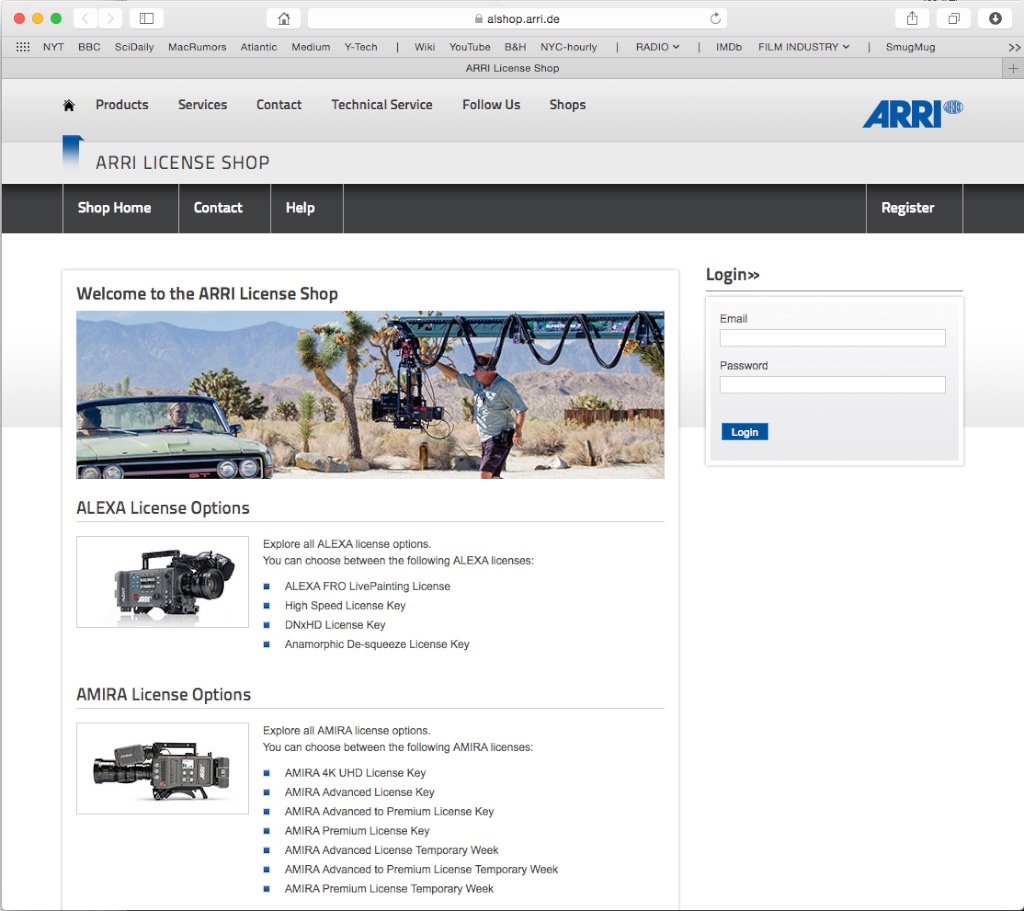
Fountain of camera youth
Another trend that has sneakily ensconced itself: firmware updates. RED was once mocked for their habit of releasing cameras as works-in-progress. Sony would never release a camera that wasn’t bug-free and fully realized, pros sniffed, without a full complement of mature features. That was then, this is now. When you buy an FS7 or F5/55 from Sony today, you get a roadmap of upcoming feature sets to be implemented on a schedule. Not that there’s anything wrong with that… Cameras are image computers, after all, and Mac and PC operating systems and apps get updated all the time.
If new capabilities get doled out incrementally in today’s world, it’s because it’s been proven (thanks RED) that cameras can be delivered to market before they’re fully baked, with no market penalty. Which allows manufacturers to stretch and allocate resources accordingly. Imagine if you bought a car with the understanding that the radio and windshield wipers would work pending a future firmware update. To be fair, everyone is doing this now — Canon, Panasonic, ARRI.
Of course, the counter-argument is that it’s way cool to have a camera that can acquire valuable new features over time, especially free ones. On the manufacturing side, some say that adding new features over time protects your investment, extending its useful life. If you’re in either camp, enjoy this heyday.
There’s another paradigm operating here, though, akin to Apple’s App Store. Instead of packing every possible feature into a camera from the outset, why not monetize them à la carte? This might also provide for, even encourage, new, innovative features to be developed, perhaps attracting a community of outside developers. Sony has already launched such a store, where you can purchase apps that add time-lapse and stop-motion to your mirrorless a7S, as well as other tricks. You pay for them and download them using Wi-Fi. The a7S is a Wi-Fi device just like your smartphone for this reason.
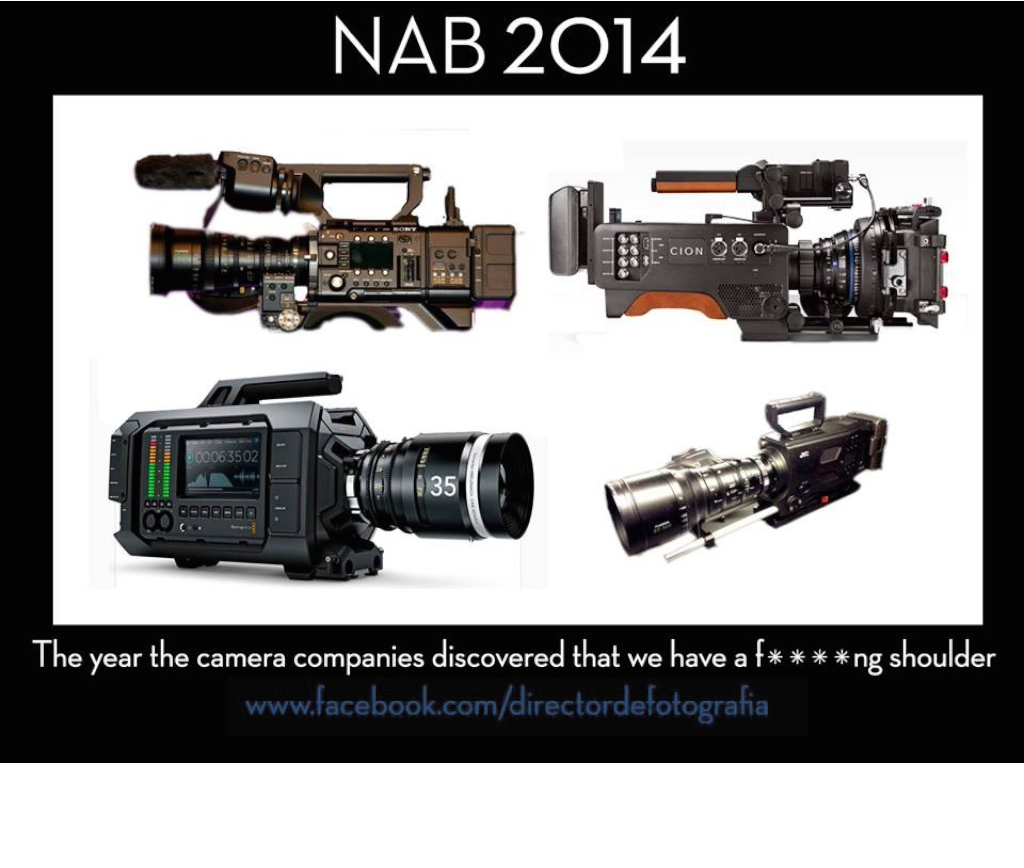
Body as machine
Only the weightless nirvana of outer space can entirely relieve our spine and musculature of gravity’s tug at our ungainly cameras. (And only animation — cinema’s consummate expression — exempts the camera from the physical world altogether.) But as Aaton demonstrated in the 1970s, lengthy handheld sessions need not become upper-body resistance training.
The past year brought progress in ergonomics, which I define as the ease with which a shoulder-mounted camera can be handheld without discomfort. Large-sensor cameras tend to demand sizable lenses, which militates against holding the combo in front of you like a Handycam. Nothing against biceps, but nature gave us shoulders for a reason.
Beyond comfort, ergonomics encompasses balance and control. Placing ARRI’s middleweight but graceful and even-keeled Amira on your shoulder is Exhibit A on how to do this right.
Thankfully more camera designers are now paying attention. More on this below.
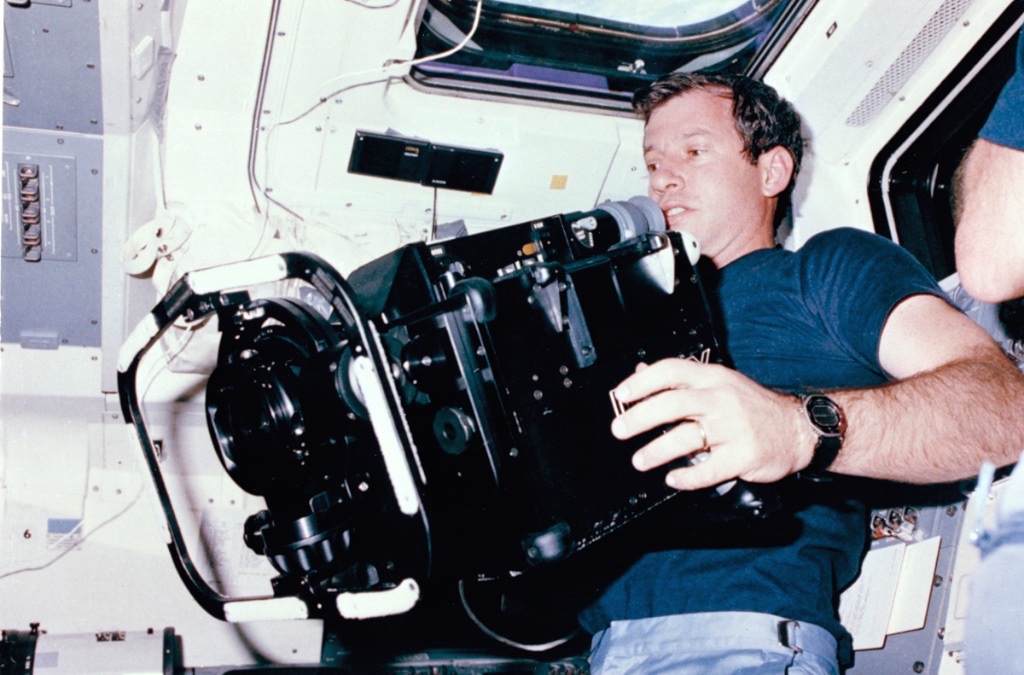
Cameras have skeletons, too
For those of us who shoot handheld on planet Earth, nothing impacts camera weight like the selection of materials used for a camera’s skeleton and outer skin.
Sony favors a magnesium skeleton. Magnesium is the lightest structural metal in use, 34 percent lighter than aluminum. Boasting the highest known damping capacity (resistance to vibration) of any structural metal, it’s common in aerospace hardware and high-end bicycle frames. At 13 percent of the planet’s mass, it’s also the fourth most common element on Earth.
The thermoplastic skin covering the magnesium skeleton in Sony’s FS100 and FS700, for one example, is a high-tech blend of ABS and polycarbonate. Attachment threads for tripods are either stainless steel or ADC12 aluminum alloy. (I’m a materials junkie, which is why Jony Ive and Apple’s Industrial Design Group fascinate me.)
The reason I’m dragging you, dear reader, into the weeds on this subject is to detach you from the false idea that low weight equals cheaping out, i.e., substituting inexpensive plastic for durable metal construction. Rather, it can result from modern industrial design of the highest order. If Sony’s F5 and F55 feel lighter than the competition, there’s an intention: they were designed that way.
ARRI takes another route. Think exoskeleton, thick aluminum. “Hearty, heavy, and here to stay,” say ALEXA and AMIRA, “we’re solid and durable.” Music to the ears of rental facilities. The original ALEXA, body only, no viewfinder, is 13.8 poundss. AMIRA is 9.2 pounds. Sony F5 and F55 are both 4.9 pounds.
Don’t get me wrong. I’m a huge fan of ARRI camera design. No company is more attentive to professional build quality. And ALEXA is the gold standard for most veteran cinematographers. But if you plan to add a viewfinder, PL-mount zoom, rods, follow-focus, battery, mic receiver, etc., for a daylong vérité shoot, even with svelte AMIRA, make sure you’re in great shape.
Modularity wins out
The awkward name “camcorder” betrays the device’s modular roots. Primordial models from the early 1980s — RCA Hawkeye, Panasonic Recam, Sony Betacam — were portable three-tube cameras docked to bulky portable recorders. The chief advantage was that if the recorder section failed mechanically, a new one could be attached without taking the costly camera out of service.
We no longer use tape recorders with moving parts in our camcorders. Panasonic’s new VariCam 35 (Super35) and VariCam HS (3-chip, 2/3-in.) share a single dockable recorder for an entirely different reason: choice of camera to best meet practical as well as creative needs. It’s now about options.
Maybe it’s a consequence of several generations of kids raised on Legos, but the fact is that modularity is the new normal for large-sensor, interchangeable lens cameras. All professional digital cinema cameras today are described by their manufacturers as foundational “platforms.”
Come to think of it, the lens itself is but the camera’s optics module. Often, these days, attached to a modular lens mount.
Off with their heads
Those primitive camcorders were not meant to be separated during use. Why would you want to? All the controls, the viewfinder, were part of the camera. Well, one reason would have been that camcorders were large and cumbersome back then. It was hard to shoot in tight quarters, for instance in a car’s front seat, for an interview with the driver. Hit a bump and you risked shattering a car window with the camcorder’s brick battery.
Various camcorders in the late 1990s from Ikegami and NEC allowed their heads to be separated by a cable from the recorder for just such a purpose. Of course, an alternative would have been to cable a small cube camera to an external recorder, but somehow the problems of how to monitor such a tiny camera, not to mention power and control it, always got in the way. Then came the era of pint-size digital palmcorders that could nestle in the hand.
The arrival of large-sensor digital cinema cameras, with their weight and bulk, renewed interest in separating a camera’s head. How to mount on a Steadicam or aerial mount, crane, jib or 3-D rig? Sure, you could throw an HDSLR at the problem, but that’s not really the same thing, operationally or in terms of the resulting image. How to get the look of an ALEXA without the weight of an ALEXA?
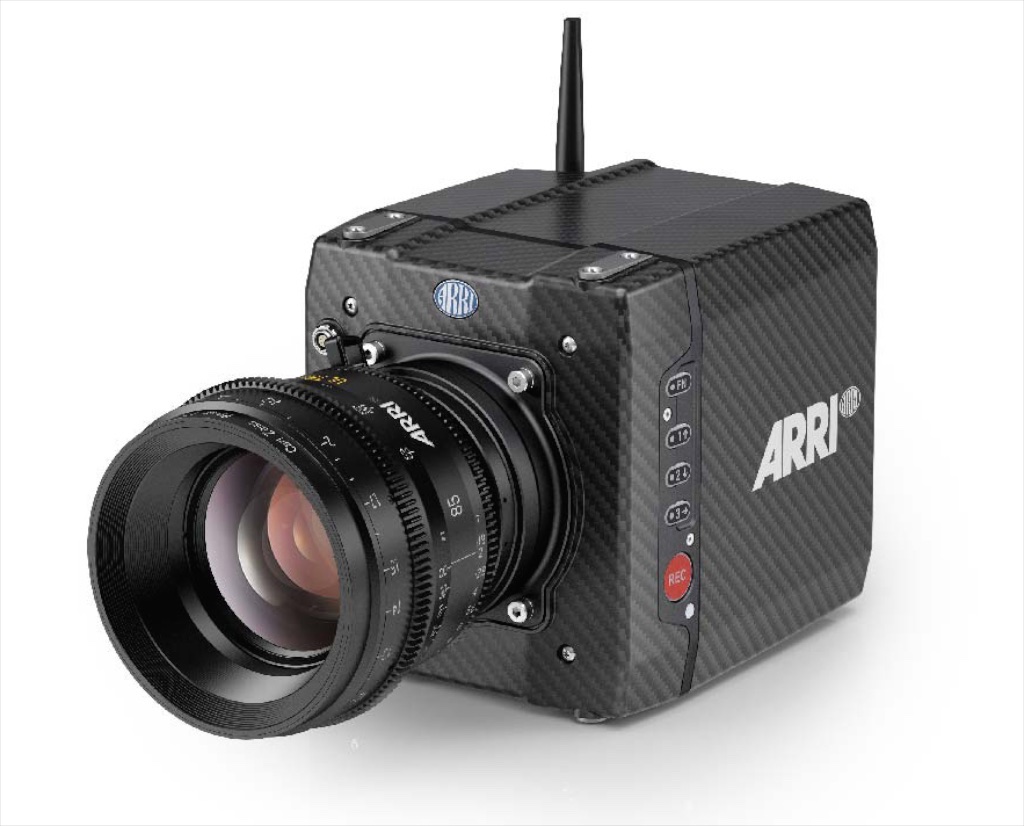
At NAB 2011, ARRI solved this by introducing the ALEXA M modular camera system. (“M” is also for Marie Antoinette, what the ARRI staff was calling it.) This new, compact 6.4-pound head could fit many tight places, tethered by a 16- or 65-foot fiber optic snake to a 12-pound ALEXA M body. This February, ARRI announced an even smaller head, the 5-pound ALEXA Mini, identical in weight and size to a RED Epic Dragon. Gone is the aluminum exoskeleton, replaced by a strong, lightweight carbon fiber skin wrapped around a titanium lens mount. The sensor is mounted on titanium, too. (Advanced materials!)
Meanwhile, at NAB Panasonic will introduce a “Steadicam-length” 6-foot cable to separate the head and recorder of VariCam 35 and VariCam HS. A 100-foot cable is currently undergoing testing, too.
Wirelessness
My stick-thin iPhone 6 juggles four wireless systems: 4G , Wi-Fi, Bluetooth and NFC (near field communication, for Apple Pay). As mentioned, my mirrorless Sony a7S is a Wi-Fi and NFC device. It also creates its own wireless local area network (WLAN). Why? So that when shooting HD or UHD, I can use the iPhone 6 or iPad Air as a remote monitor that includes basic start/stop and exposure controls.
Makes me think, could there be fewer cables hanging from my handheld large-sensor camera?
Wirelessness is not news. We’ve had wireless lens control for Steadicam and jib-mounted cameras for decades. We’ve had wireless mics. Every time you watch a drone buzz overhead, whether an inexpensive DJI Phantom or an eight-rotor behemoth with a RED Epic payload, you’re watching reliable wireless control, with wireless video monitoring.
But I can think of several types of wirelessness I’d like to use with my digital cinema camera this very minute. Bluetooth for audio monitoring, so I never again have to worry about walking away from the camera and yanking out my earbuds. An IP address for a smartphone or tablet mobile Web browser, to access menus, settings and functions via WLAN. A remote viewfinder display with waveform and histogram. Low latency (few frames at most, matching existing HD-SDI on-location latency) so that the Retina Display on my iPad Air can serve as a featherweight high-quality monitor. Icing on the cake would be touchscreen control of focus for EF and E-mount lenses, maybe zooming, too.
I expect someday someone will say, “There’s an app for that.” And sure enough, there already is. Panasonic just introduced P2 ROP (Remote Operation Panel) in Apple’s App Store. It’s an iPad wireless control panel for the handheld AJ-PX270 and shoulder-mount AJ-PX5000. An AJ-WM30 wireless module, basically a USB dongle, is required to make it work, since WLAN is not built-in. But it’s a step in a very interesting direction.
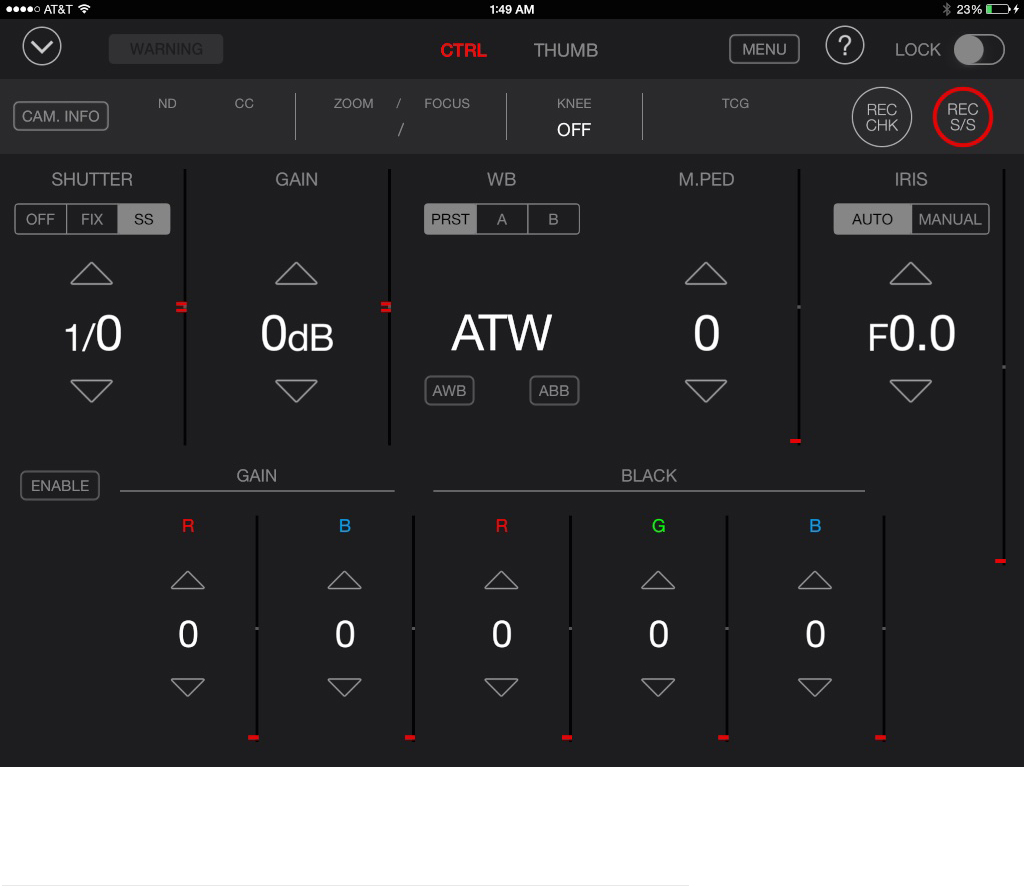
To use P2 ROP you’ll need a separate picture monitor to view the image. I know, I know… for all the recent fuss over Meerkat at SXSW and the fawning over its rival, Periscope — live-streaming iOS apps (Android soon) that promise to do for live video what Twitter did for 140 characters — you’d think wireless live video would be the easy part.
But we’re getting there.
One-third-inch sensor Handycams like Sony’s PXW-X180 already incorporate a WLAN for both monitoring and sending MP4 proxy video to mobile devices. JVC camcorders create “liveshot” ENG coverage using their built-in streaming over 4G LTE Wi-Fi hotspots. (An improvement over “bonded-cell” backpack systems worn by local news crews, which rely on cellular phone networks.)
Digital cinema cameras can use third-party encoders and transmitters to stream video to monitors and tablets. Paralinx, Teradek, IDX and Geffen offer economical HDMI wireless systems. Pro systems are available from Teradek and Transvideo. Teradek’s Bolt Pro, for instance, transmits uncompressed HD with zero latency.
Notice the cute little antenna at the rear of ALEXA Mini above? A built-in WLAN provides remote control of the Mini’s functions using a mobile browser. No custom apps needed. This includes control of motorized ND filters, and also focus, iris and zoom using the Mini’s built-in lens motor controller. New super-light ARRI lens motors are attached directly to the titanium PL mount — perfect for gyro-stabilized, 3-axis brushless gimbal rigs like Freefly’s MöVI and the larger multicopters.
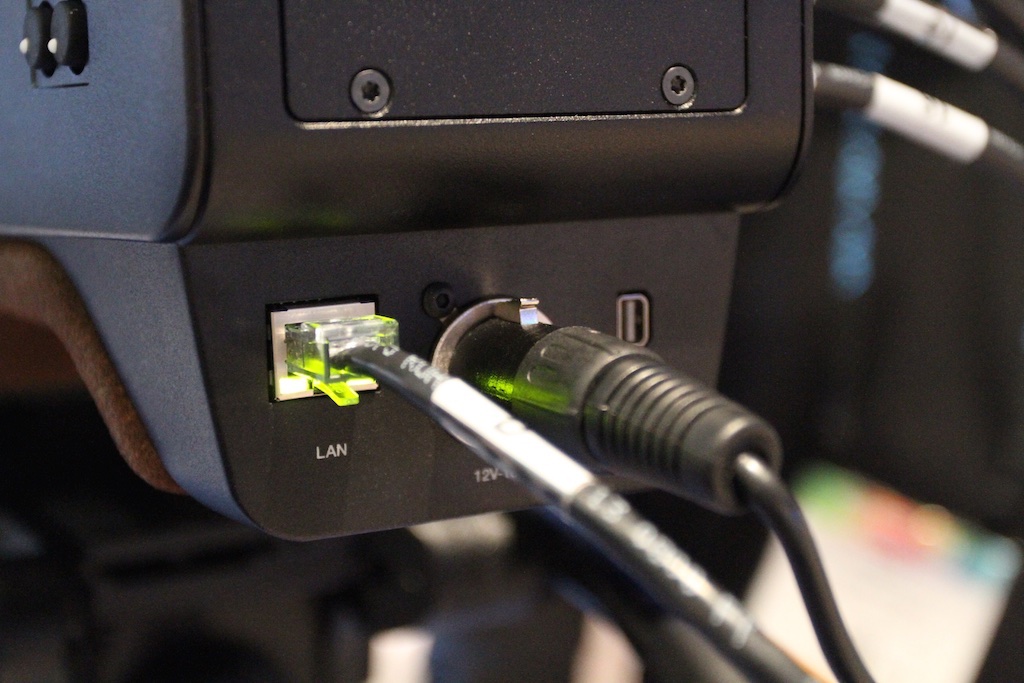
control of CION from a laptop.
Ethernet
A WLAN uses IP (Internet Protocol)… what about wired IP?
That the future is IP, this is already settled. Video decks with Ethernet ports have been around well over a decade. What doesn’t get uploaded these days? Stored on hard drives?
So, why is video still sent over coax cable? Why do we still have SDI? Reasons include legacy infrastructure, costs of replacing existing equipment and fear of packetized data over reliable, dedicated signals.
Ethernet cabling — copper or fiber optic — transmits everything: email, Internet traffic, MS Word files, CAD, VoIP phone calls, audio, video, what have you. If you were designing the video post facility of the future, would you prefer to lay several types of specialized cabling, each with their quirks and strictures, or just one fat pipe that carries everything and wouldn’t have to be replaced when tomorrow’s data types arrive?
At last year’s NAB, Sony demonstrated a live-production system that uses IP over 10G Ethernet instead of HD-SDI or HDMI to transmit up to four streams of HD. At NAB this year, Sony will announce the world’s first IP-networked, 4K live-production switcher, with IP-enabled cameras to follow within the year.
Meanwhile, Ethernet jacks are sprouting on cameras everywhere. Panasonic, for one, equips new cameras like VariCam 35 and HS with an Ethernet jack for direct file transfer to FTP servers, no computer required. At 100 Mbps, it’s not fast enough for streaming any but compressed proxy HD, but it’s a start. (Panasonic’s USB wireless module, mentioned above, also enables direct wireless transfer to an FTP server.)
2/3-inch redux
2/3-inch sensors never went away. While large-sensor cameras blazed new paths in digital cinema image acquisition, broadcast camera manufacturers continued to develop single and 3-chip 2/3-inch cameras, as well as 1/3-inch and 1/2-inch counterparts, 4K versions included.
2/3-inch sensors cling to their original advantage: they’re smaller. They allow for compact camera designs and lighter, more affordable lenses with longer zoom ranges. They provide generous depth-of-field and even deep focus, especially helpful in sports, news and reality TV. Although prism blocks bring their own set of issues, some argue that 3-chip cameras produce better color sampling since there’s no interpolation or deBayering. (Apple agrees, if a recent patent for a 3-chip iPhone camera is any indication.)
On the basis of VariCam HS, Panasonic certainly thinks so, too. So, does the new Grass Valley (merged with Miranda, acquired by Belden), which previewed a 4K 2/3-inch sports camera with both PL and B4 lens mounts at NAB last year. This year, their prototype returns to NAB as the LDX 81 4K (UHD), a shoulder-mounted, B4 zoom lens camera that looks like any other 2/3-inch shoulder-mounted camera — which is the point.
Hitachi will up the ante — it’s Vegas, after all — by introducing its SK-UHD4000 4K (UHD) camera, which boasts four 2/3-inch sensors, enabling two types of green signals for enriched detail. Again, think sports, big box lenses.
Not to be sidelined, Sony will take the wraps off its own 2/3-inch 3-chip 4K camera at NAB, up until now a secret. If nothing else, it’s clear that stadium sports coverage is going to get a lot sharper and more detailed. Hey, something’s got to fill all those curved Samsung UHD screens!
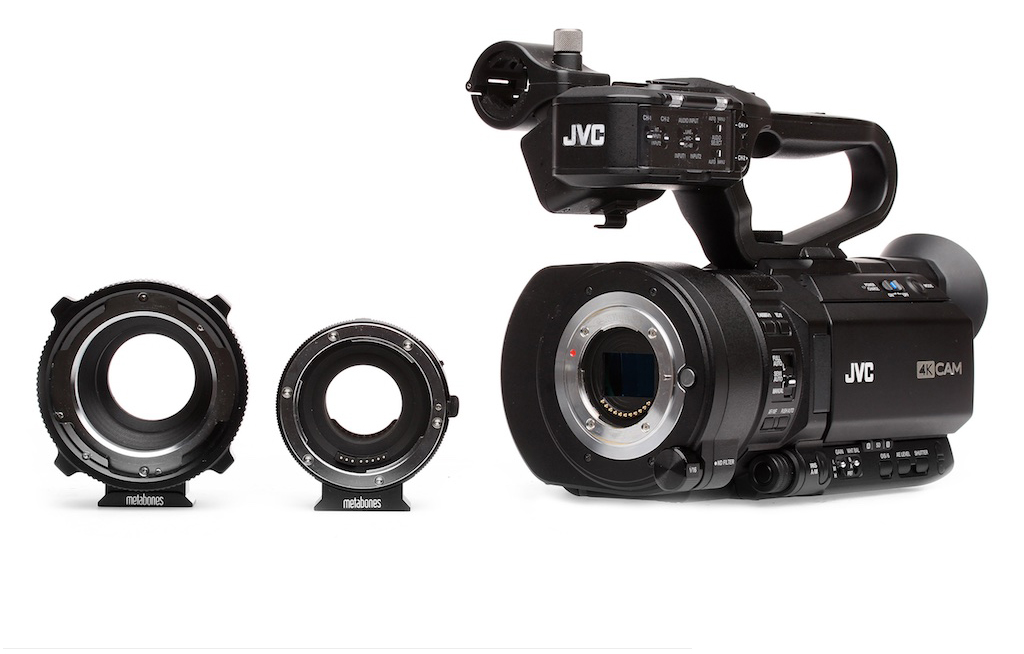
sensor, which is unique. Metabones adapters allow use of PL and Canon EF lenses.
Evolving mounts
ARRI’s PL (Positive Lock) and Canon’s EF (Electro-Focus) are legacy mounts from the days of film cameras and autofocus SLRs, when 45-degrees mirrors occupied the zone between lens and focal plane. They’re mature, fixed standards. Countless lenses fit them.
E-mount and Micro Four Thirds, however, are recent, developed for a new generation of dwarf mirrorless still cameras with flattened flange focal distances. In fact, the presence of an E or MFT mount on a camera indicated its sensor size. E-mount was found only on Sony APS-C cameras (equals S35), while an MFT mount was used only in front of an MFT sensor (30-40% smaller in area than APS-C).
But a funny thing happened on the way to the Forum (casino where press conferences unfold at NAB). Despite their shallow 18mm and 20mm flange focal distances, both E-mount and MFT have lately been adopted for use with larger sensors than originally intended.
Sony’s a7 series of mirrorless E-mount cameras, including the popular 4K (UHD) a7S, possess full-frame sensors. For these cameras, Sony introduced a new lens type called FE (Full-frame E-mount). The a7’s E-mount is still a basic E-mount however. APS-C lenses still fit perfectly. If a Sony a7S with a full-frame sensor sees vignetting due to an APS-C or S35 lens, it will automatically window down its sensor to match the smaller image circle. If it sees an FE lens, it will output full-frame 4K (UHD), a frame the size of VistaVision.
JVC has similarly repurposed an unmodified MFT mount for its new GY-LS300 handheld 4K (UHD) camcorder. Inside the GY-LS300, JVC has substituted an S35 sensor larger than the usual MFT-sized sensor. This is a JVC innovation. Will others follow suit?
Then there’s Canon, which three years ago introduced its own mirrorless, 18mm flange focal distance mount, EF-M. We haven’t heard much about this mount, and there aren’t many Canon lenses for it. Could that change soon?
Lastly, with the surprise announcement of ARRI’s Alexa 65 last fall, we now have a new plus-size PL mount, suitably named “XPL.”
What happens in Vegas, stays in Vegas… until NAB
In the run-up to NAB 2015, here are my brief notes on the latest large-sensor digital cinema cameras, alphabetized by company — a snapshot of where we stand in early 2015. Use these comments to inspire your own Internet searches. Fill in the details I leave out. And don’t take my opinions as the last word on any camera! Cameras can be truly understood only through repeated use. Bear in mind that it’s the cinematographer, not the camera, who crafts images. By the same token, a camera — any camera — becomes an artistic tool only in the hands of an artist.
Each of these cameras can make art.
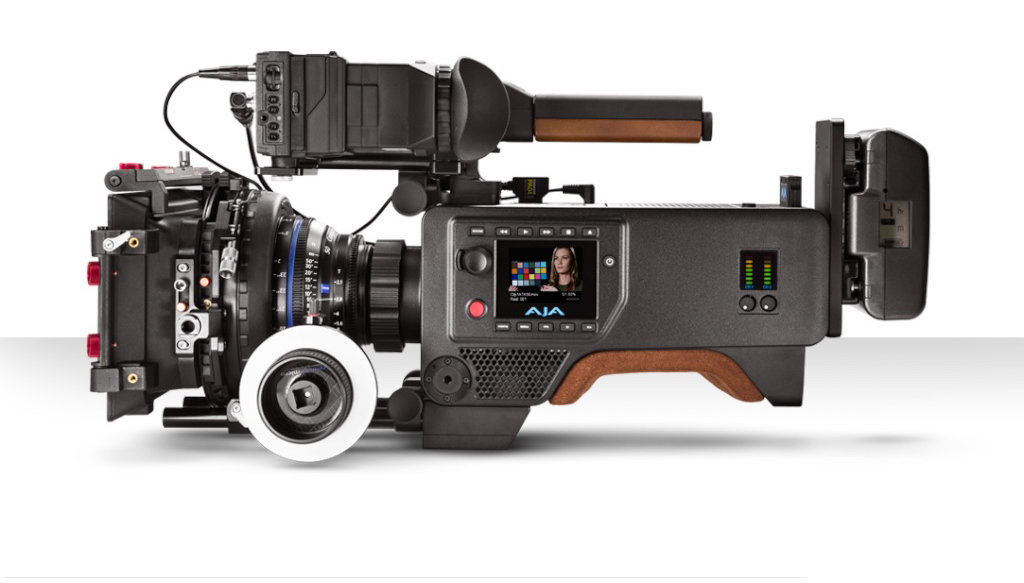
AJA
AJA is renowned for Mini-Converters, Kona capture cards and superb Ki Pro ProRes recorder/players. Last year at NAB they joined the madding crowd of those seeking cinematic glory devising the latest, greatest 4K camera. It’s exceedingly rare, first time at bat, to smack a home run.
I personally know two esteemed camera inventors who stumbled with large-sensor cameras. In each case, the impossible hurdle was the sensor, the cardinal component you can neither tailor nor tweak yourself. You must work with what’s available from a third party, including color science. AJA’s CION reportedly uses the same Cmosis 4K global-shutter sensor as Blackmagic’s URSA and IO Industries’ Flare 4KSDI. (I haven’t seen this denied.)
My issues with CION include the unfortunate fact that it’s front-heavy. My friend Art Adams at ProVideo Coalition takes issue with the image, which may stem from a cascade of causes, starting with the sensor.
Whatever the case, at $9,000 (body only, PL-mount), you can’t go too wrong. Built-in ND filters are lacking, but there’s plenty of typical AJA progressive design: 4K/UHD/2K/HD internal recording to ProRes 4444 and 422, a magnesium skeleton and light 6.4-pound body, built-in 15mm rods, Thunderbolt output for live recording, and a rear Ethernet jack for complete camera control using a Web browser.
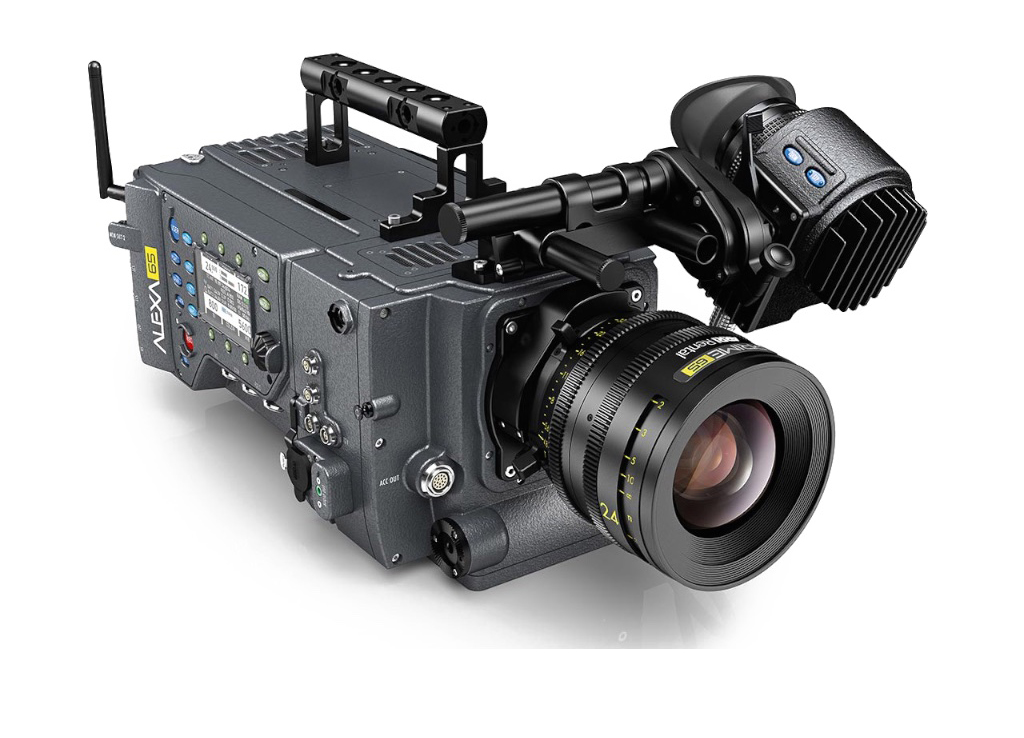
ARRI
ARRI’s ALEXA was the first digital cinema camera you could lift from the case, take a light meter reading, then shoot with like film. Ninety years of camera manufacturing were evident in its design, build and fine details. Experienced DPs were sold instantly. What sold the industry was ARRI’s reputation and, above all, ALEXA’S film-like image.
Unwilling to rest on laurels, ARRI has been on a tear lately. ARRI introduced the exceedingly well-balanced (if not lightweight) handheld AMIRA in fall 2013 at IBC, and by last autumn had delivered 30 cameras to NFL Films, which chose AMIRA to replace 16mm after a 50-year run. (They’re keeping “Films” in the name.)
Last fall, AMIRA’s first software update brought, among other things, Bluetooth support for audio monitoring (yes!), Ethernet support for laptop display of AMIRA’s LCD panel for remote control (yes!), and a viewfinder waveform display (yes!). Update 2.0 this month adds Wi-Fi support for iOS and Android displays of AMIRA’s LCD control panel and also ARRI’s first internal 4K (UHD) ProRes recording capability, up to 60fps via a 1.2x upsample to 3840 x 2160. (Some of these features are not free and require purchase from the online ARRI License Shop. Upgrade to 4K also requires sensor calibration at an ARRI service center.)
Spending time with AMIRA, what I can tell you is that she’s not a starter camera. If you were to own one, trading up would never cross your mind. Due to her heft and shape, she settles into the shoulder, which naturally dampens shakiness, making shots steadier without image stabilization, like in the old days of film cameras. The viewfinder is so sharp and natural-looking (like an optical finder), I never was in much doubt about focus. This is a handheld camera for which, over time, you would lovingly develop a personal technique for.
But that’s not all from ARRI. Last fall at Munich’s CINEC, they unwrapped their ALEXA 65, containing a huge 6560 x 3102 sensor, larger than 5-perf 65mm film, in a body barely wider than a classic ALEXA. So far, the only available lenses are re-housed Hasselblads. Initially ALEXA 65 will be rental-only.
Then in February, as mentioned above, ARRI made a splash with ALEXA Mini. And if that weren’t enough, a month later they announced ALEXA SXT (Super Xtended Technology), with internal recording of ProRes 4K UHD and ProRes 4K Cine (4096 x 2637 pixels). This was accomplished by applying the high-performance processing developed for the ALEXA 65 to the output of ALEXA’s existing 3.4K ALEV III sensor.

Blackmagic Design
At this writing, I have no clue what Blackmagic has up their sleeve for NAB. I’m certain they’ll spring a camera surprise or two. They always do.
Meanwhile, I’m still trying to wrap my head around the URSA 4K that Blackmagic surprised us with last NAB. Deliveries began last fall, although I’ve yet to glimpse this camera in the real world.
It’s fun to watch people’s faces when they first pick it up. The body alone is heavier than an ALEXA with a viewfinder, three and a half times the heft of a Sony F55! With its open handle on top, the first thing I thought of was a Scottish curling stone, those polished granite cheese wheels that get flung on ice during the Olympics. This is 16 1/2 pounds of aluminum that will never get thrown on anyone’s shoulder.
With a price of merely $6,000 (EF version), you’re getting more chuck for your buck. And I do admire URSA for its audacity, its rethink of convention. An outsized 10-inch picture monitor flips out from the operator side, with playback buttons along the edge. Tucked underneath this screen on the camera’s side is a second 5-inch touchscreen, for audio, t.c. and menu settings, plus a lower row of control buttons. On the assistant’s side is a similar 5-inch touchscreen, with the same buttons. Three, count ’em, three screens!
URSA has built-in 15mm rods like ALEXA. It records 12-bit CinemaDNG RAW or ProRes HQ to the same CFast cards ARRI co-created with SanDisk for AMIRA. It uses future-proof 12G-SDI connections for 4K. Built into the bottom of URSA is a V-lock for a Sony VCT-14 quick-release plate. All good ideas.
There are four versions promised, sorted by lens mount: EF, PL, B4 (with some sort of 2/3-inch sensor) and “HDMI” with no sensor, add your own DSLR.
URSA houses the same Cmosis 4K global-shutter sensor found in Blackmagic’s Production Camera 4K, AJA’s CION and IO Industries Flare 4KSDI. All of these cameras shy away from discussing native ISO because it’s low, perhaps 320, which doesn’t cut it these days, especially in typical documentary low-light conditions. Even though URSA’s global shutter eliminates rolling shutter, whip pans are unlikely in the first place, given the camera’s inertial mass.
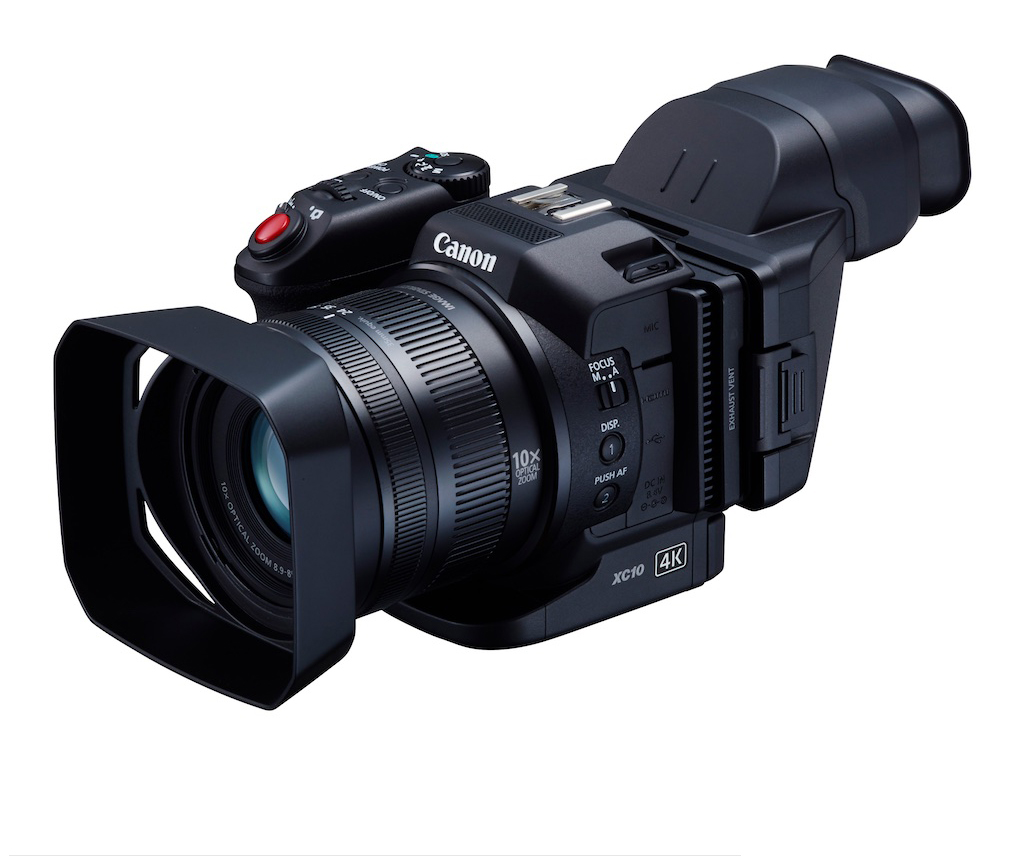
Canon
Last year Canon introduced Dual-Pixel Phase Detection Autofocus upgrades for the C100 and C300 — the fastest, most accurate autofocus ever – then produced an improved C100 Mark II with bigger viewfinder, eyecup, side-hinged LCD, and built-in mic. Along with an upgraded DIGIC DV IV processor for better signal bandwidth, lower noise, and 35Mbps MP4. Cherry on top was the built-in Wi-Fi for file transfer to the Internet and wireless remote control via browser.
Just announced are the C300 Mark II and XC10, both 4K. Impressively, the C300 Mark II ($16K street, available Sept.) uses two new DIGIC DV V processors to capture UHD or 4K (4096) to H.264, 10-bit intraframe, up to 30 fps, to CFast cards. Or 2K/HD up to 120 fps to an SD card.
The XC10 ($2500, available June) is a poor man’s RED, a still/video hybrid with a 13.4 megapixel 1-inch sensor the size of Super16, which means wide depth-of-field. It captures UHD to H.264, 8-bit, up to 30fps, to CFast cards. Or HD to SD cards. The XC10’s fixed zoom has a 10x ratio, great for documentary. Unfortunately it ramps two stops: maximum aperture is f/2.8-f/56. There’s a single built-in ND. However no audio controls, XLRs, or built-in mic. Only a 3.5mm mic jack and headphone jack. No dual-pixel autofocus either.
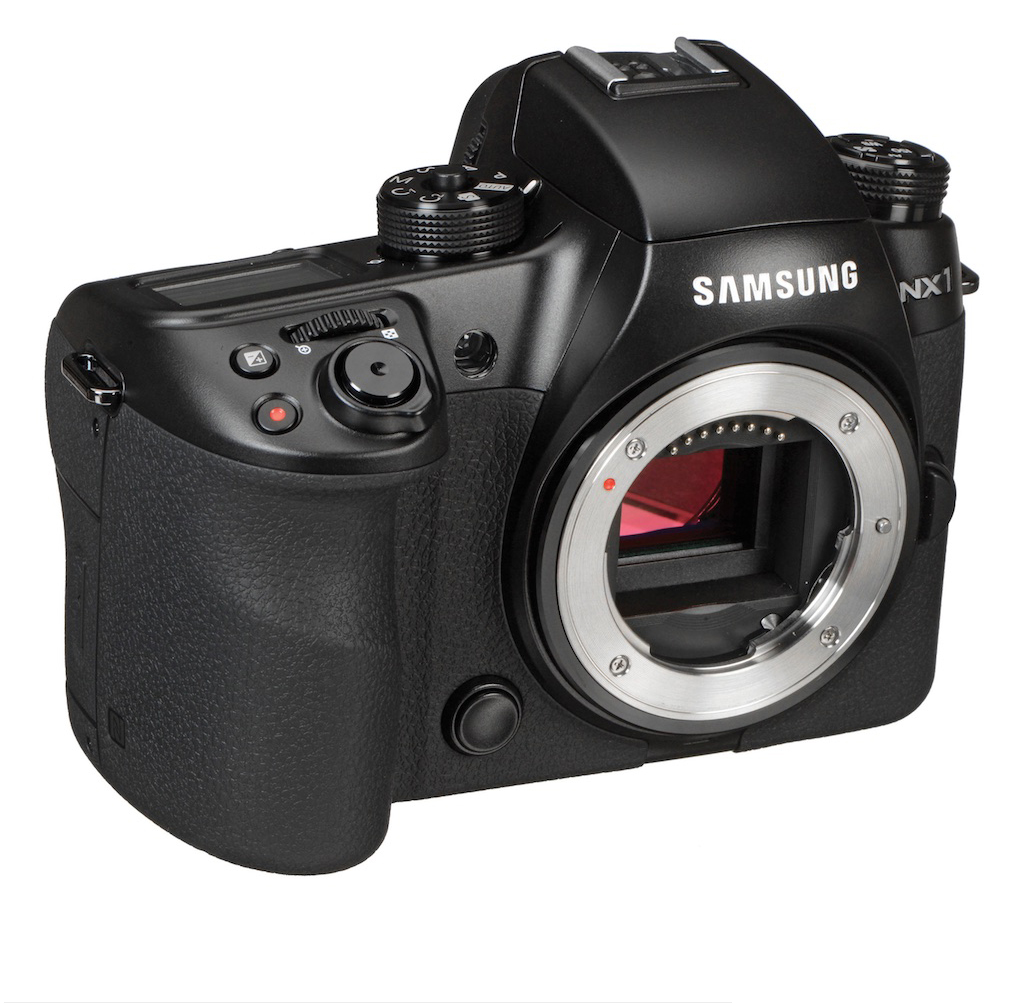
HDSLRs and mirrorless
Mirrorless still cameras capable of 4K (UHD) have created an all-new playing field. At the moment, it’s mostly an empty one, with basically two players. Of course I mean the Panasonic GH4 and Sony a7S, which provide a genuine choice in sensor size.
The GH4 starts out with a Micro Four Thirds sensor, 30-40% smaller in area than APS-C, from which it extracts an even smaller window of 3840 x 2160 pixels for UHD. As it turns out, this comprises an area not much larger than S16. Increased depth-of-field is the happy result. The a7S takes the exact opposite approach, incorporating a specialized full-frame sensor with little more than enough pixels for UHD. Its low pixel count, 12.2 Mpixels, is offset by the giant size of its pixels, making it the low-light champion of the universe.
(If you have an hour to burn, watch Dave Dougdale’s detailed YouTube disquisition comparing the two, at the end of which — spoiler alert — he ends up buying both!)
A new mirrorless 4K-capable kid on the block, Samsung’s NX1, announced several weeks ago, takes a third approach, adopting APS-C with on-chip, phase-detection autofocus. Early reports are that its UHD images, recorded in-camera to cheap Class 10 SDHC cards made possible by use of the latest H.265 compression — perhaps the first to do this! — rival, if not surpass, GH4 in detail and low noise, up to ISO 3200. A sticking point will likely be Samsung’s NX lens mount. Relatively few NX lenses exist.
Mirrorless cameras are already eroding the ground from under DSLRs, which increasingly feel outmoded to me. My photographer friends are “de-Canonizing” (their word). Meanwhile, their excellent DSLR lenses will certainly live on in the used market, to the benefit of all. New DSLR lenses will also continue to be made and sold for some time to come — as always, at mass-market prices strikingly low compared to cine lenses. But the recent introduction of excellent, affordable lenses for mirrorless cameras — for instance, Zeiss’s E-mount Touit and all-mechanical Loxia series — underscores the epochal shift to mirrorlessness that is accelerating.
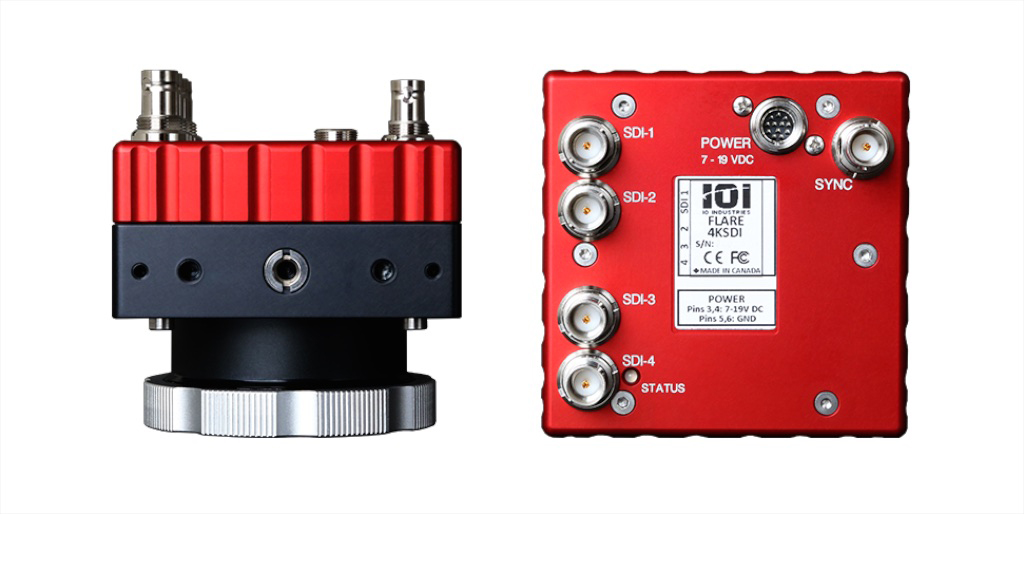
IO Industries’ 4KSDI Flare
Diminutive cube cameras hardly larger than their own sensors are common, but IO Industries’ Flare 4KSDI, a camera distilled to its essence, rates special mention for its clean design. There’s a PL, EF, or Nikon F mount up front, then a threaded mount point on each side. At rear are four connectors (quad-link) for 10-bit 4K or UHD output, 4:4:4 or 4:2:2, RAW coming soon.
That’s about it. As noted above, the Flare 4KSDI shares a 4K global-shutter sensor with CION and URSA.

JVC Kenwood
At NAB last year, JVC showcased a prototype GY-LSX1 4K (4096) S35 shoulder-mount camcorder with PL lens and IP for remote control and streaming. I particularly liked the built-in 15mm rods and integrated rosette, both ARRI touches.
Not much has been heard since about this camera, fetchingly nicknamed “Elise,” but JVC’s other NAB 2014 prototype, the handheld GY-LSX2 4K (UHD) S35 camcorder, surfaced at Sundance this year, renamed GY-LS300. This is the JVC interchangeable-lens camcorder mentioned above that uniquely places a Micro Four Thirds mount in front of a S35 sensor.
Included are built-in ND filters like a Sony FS700. With a native ISO of 400, the GY-LS300 records AVCHD, 8-bit H.264 HD (QuickTime .MOV) at 50Mbps, and UHD (up to 30fps) at 150Mbps, all to economical SDHC/SDXC cards.
The GY-LS300 puts its two SD slots to good use. A dual-codec camera, it can simultaneously record one type of file to card A and a second type to card B, or stream the second codec live to the Internet.
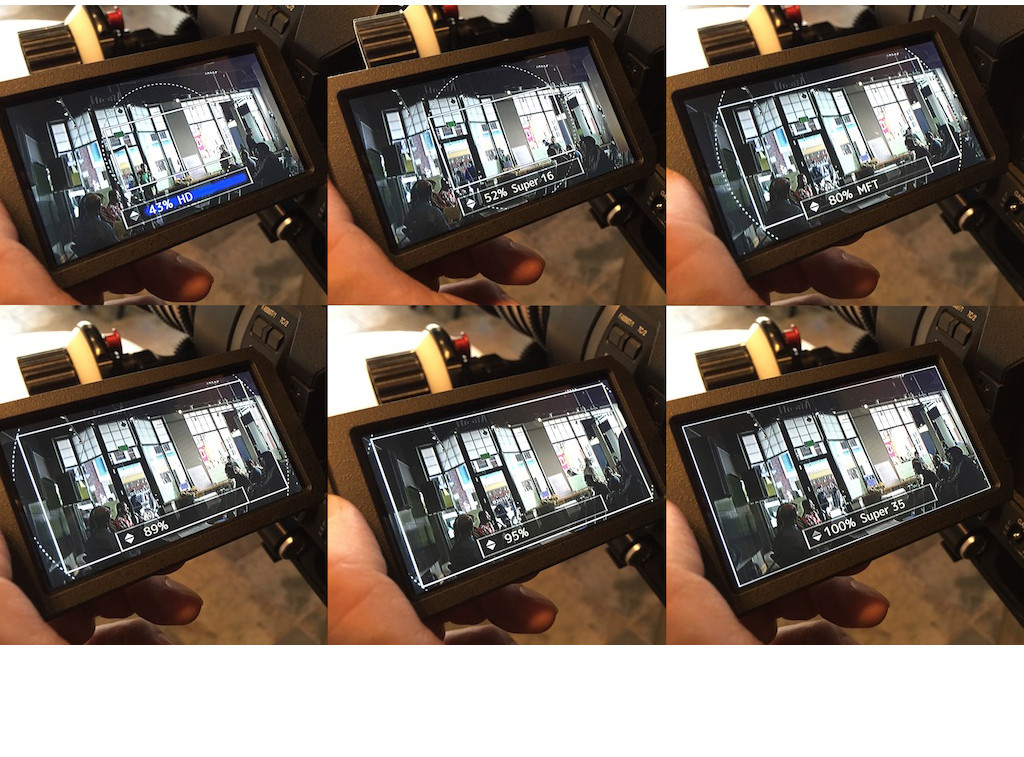
But the GY-LS300 performs an even more impressive parlor trick: what JVC calls Variable Scan Mapping. To accommodate the image circle of various formats from HD to S16 to MFT to S35, the GY-LS300 allows you to dial in the image circle size you want in percentages of the full S35 sensor. You can also use this to obtain close-ups when shooting HD with a wide-angle lens!
If the GY-LS300 proves to be a reliable performer, JVC could have a hit on their hands for several reasons. It’s compact and familiar. It looks like a 1/3-inch camcorder and at $4,000, it’s priced like one, too.
As JVC’s Craig Yanagi quipped, “4K for $4K.” Where have we heard that before?
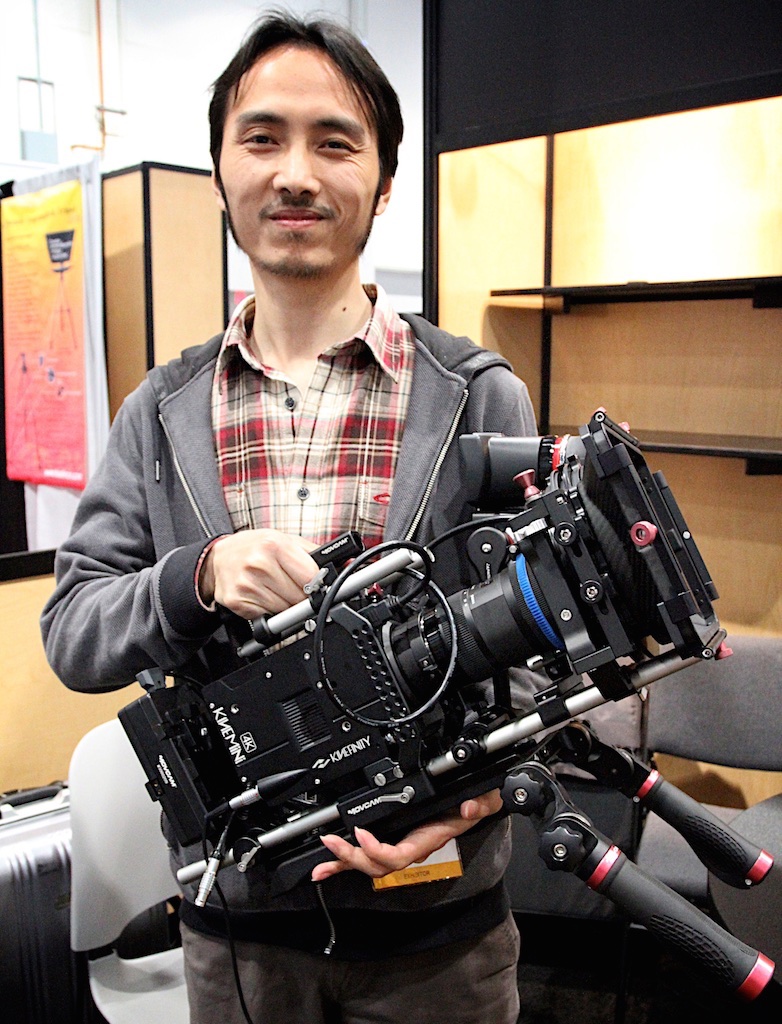
KINEFINITY
With Kinefinity’s KineMINI 4K, China joins the Group of Five — U.S., U.K., Japan, Germany, Australia — currently manufacturing digital cinema camera systems. A Beijing associate of familiar accessories maker Movcam, Kinefinity offers internal recording to 2K Cineform RAW and, for higher resolutions, their own 12-bit KineRAW codec. Notably, KiniMINI offers S16 windowing to enable use of S16 lenses. All for somewhat less than the cost of a Sony FS700.
At NAB this year they’ll showcase their latest KineMAX 6K, a compact S35 camera with a 4:3 6K sensor (8K when de-anamorphosed) and choice of PL, EF and Nikon F lens mounts. Records 6K RAW internally.

Panasonic
I mentioned VariCam 35 and VariCam HS several times in my notes about modularity, Ethernet and the surge of 2/3-inch 3-chip, B4-mount cameras. Bowing at NAB last year, Panasonic’s two-camera, shared-recorder system began shipping only last October. As the industry gains familiarity with these cameras, however, Panasonic will be seen to have been supremely strategic in taking their time to enter the digital cinema camera marketplace, for they got many things right. With VariCam 35 and HS, Panasonic reenters the ring a heavyweight.
The riffs off ALEXA could not be more obvious, and I mean this as a compliment: the placement and organization of the side user interface, big red record button, top handle, inclusion of rods and rosette. Similar viewfinder bracketry, variable optical magnification in a huge eyepiece, with “look-around” to see beyond frame. Even the basic size and shape resemble ALEXA. Plus something else a photo can’t convey: these new VariCams are solid to the feel, if a bit on the heavy side. They spare no aluminum, just like ALEXA. Maybe this explains the similar big-ticket costs, like $55,000 for a VariCam 35 with recorder and OLED viewfinder.

The lead-in photo for this article depicts VariCam’s user interface module, detached and connected by cable to form a remote control. VariCam is crammed with such innovations, too many to list here. Each head docks to the recorder using a robust V-lock. Separating them is as facile as removing a brick battery.
VariCam will support in-camera recording of both UHD and 4K not only to Panasonic’s AVC-ULTRA codecs but also ProRes 4444 and HQ. (Some of these will be rolled out with updates.) Naturally, Panasonic has developed their own log curve, V-Log, to map their 14 stops of image data. Allocation of LUTs to various outputs is as flexible as I’ve ever seen on any camera.

VariCam 35 records 4K and high frame rates to expressP2 cards, and records HD/2K to microP2 cards (look like SD). It has two slots for each, and if I’m not mistaken, can record any two slots in tandem or all four at once. Back-up and proxy heaven?
VariCam HS is said to be ISO 2500. Uniquely, VariCam 35 has two native ISOs, 800 and 5000. Visible noise grows with increases in ISO up to 4000, then suddenly quiets when switched to ISO 5000. After 5000, say 6000 and upward, noise climbs again. But no loss of resolution, no smearing from motion-based noise reduction, up to ISO 12,800. Impressive.

RED
RED evolves idiosyncratically because it can. It has the luxury, if you will, of both a captive and enthusiastic market. This approach richly succeeds for them. The 6K RED DRAGON sensor that arrived late 2013 fully delivered on a promise of extra stops of latitude and bump-ups in color science, cementing once again RED’s preeminence in digital cinema imaging. Even RED’s critics are respectful of RED’s onscreen achievements. (There’s no denying RED’s singular cachet. Film schools tout RED production courses as if catnip.)
The latest weather pattern on planet RED swirls around a new camera body rumored to supersede EPIC DRAGON, to be unveiled at NAB. RED has leaked that the new body, called WEAPON, will chiefly benefit those who have previously upgraded to Dragon.
A more fitting name for the new body might be HUBRIS.
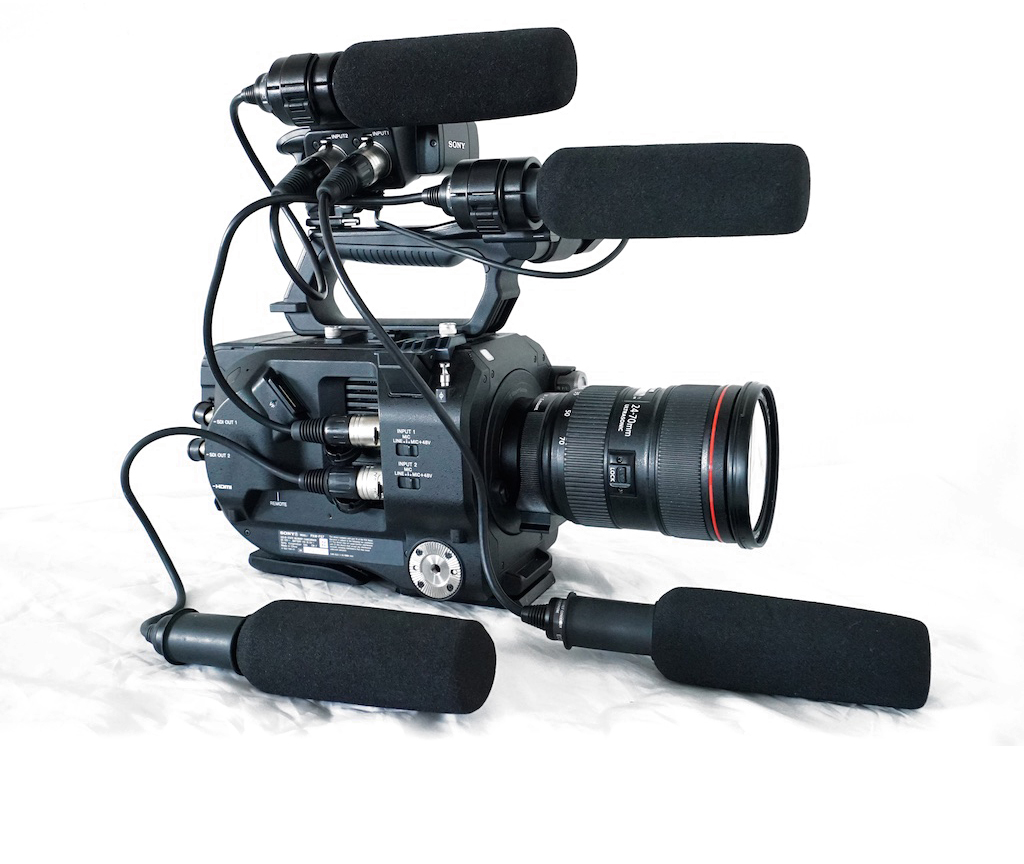
Sony
Sony currently fields the very biggest pro team of large-sensor digital motion picture cameras. This season’s roster includes FS100, FS700, F3, FS7, F5, F55 and F65. A few are close to retiring, as F35 did, but the team is still winning. The newest player, PXW-FS7, joined the team several months ago. Its nickname during development was Vérité. (Gee, where’d they get that?) Some call it an F5 at half the price because of its sensor.
FS7 captures UHD and full 4K up to 60fps (requires V2.0 update) and HD up to 180fps, recording them to a new type of card called XQD. Internal codecs include Sony’s XAVC-I (intraframe) and XAVC-L (long-GOP). Future in-camera ProRes will require an EXCA-FS7 extension piggy-backed on the camera’s rear.
The body itself weighs only 4.4 pounds due to its magnesium build, with a new, tighter stainless steel E-mount. A combination of Sony S-gamma3.cine and S-Log3 (close match to Kodak’s original Cineon curve) produces an easily graded image from a gamut slightly larger than P3. When shooting in log mode, which locks the FS7 to its native 2000 ISO, you have a choice to “bake in” your preferred LUT, to mollify that agitated producer mentioned earlier.
FS7’s greatest achievement, in my book, is the embrace of ergonomic principles ratified by decades of 16mm and 35mm handheld work. Walk around with an FS7 on your shoulder and see if I’m not right.
I take it back. FS7 proves it is possible to smack a home run with an all-new camera design.

FS7 SmartGrip is one of the best ever, in terms of shape and button layout. And I’ve used most of them.
